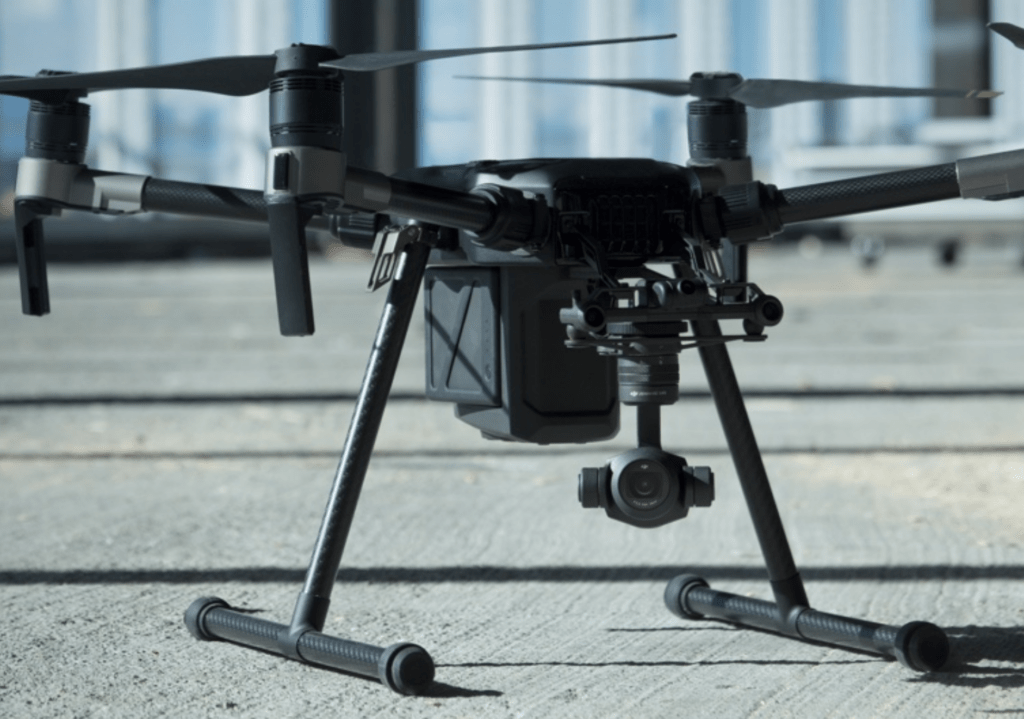The UK’s Civil Aviation Authority (CAA) has issued a safety warning to UK drone pilots using the DJI Matrice 200. The adaptable platform is used for industrial inspections, search and rescue missions, mapping and more. It has a maximum take-off weight of 6.14KG and can be used with a variety of DJI gimbals.
The Safety Notice can be read in full here. Thanks to COPTRZ for bringing it to our attention.
CAA: Small number of incidents in which Matrice 200 suffers complete power loss
According to the CAA, “a small number of incidents have been recently reported where the aircraft has suffered a complete loss of power during flight, despite indications that there was sufficient battery time still remaining.
“In each case, this resulted in the aircraft falling directly to the ground due to the immediate loss of lift with the remote pilot unable to control its subsequent flight path,” the notice says. “The small unmanned aircraft were damaged upon impact, but the CAA has not received any reports
of injuries to people or property.”
Understandably this is worrying news. The last time a major manufacturer had issues with its drones spontaneously falling out of the sky, GoPro ended up going out of business.
The Matrice 200 is significantly larger than any of the company’s consumer-focused drones, so it goes without saying that the risk to people below is greater should an issue occur.
Rather than grounding the model completely, the CAA has taken measures that take into account the important work that Matrice 200s are likely to be doing across the UK.
The CAA Safety Notice highlights the requirement that UK drone pilots need to be “reasonably satisfied” that the flight can be safely made, while also limiting the scope of Matrice 200 operations to reduce the risk to people on the ground.

Measures for UK Matrice 200 pilots to take
There are a number of measures that the CAA is asking UK drone pilots to take with their DJI Matrice 200s.
These include installing battery firmware updates through the DJI Assistant 2 app.
The CAA is keen to point out that the TB50 and TB55 batteries required need to be updated using DJI Assistant 2 and can only
be done so in pairs. In practice this means that, if the pilot has 10 batteries, they will need to perform the update five times, plugging the batteries into the aircraft, and running DJI Assistant 2 every time.
The CAA also makes it clear that test operations following software or firmware updates should be conducted in safe conditions “away from uninvolved third parties, to ensure it is working correctly.” The CAA recommends that each pair of batteries is flight tested.
The CAA has also put in place a provisional suspension of certain operations. DJI Matrice 200 pilots have been directed not to fly above any persons at any height until further notice.
In addition to that, any element of a permission based on an Operational Safety Case (OSC), issued by the CAA to an SUA operator which permits the operation of a DJI Matrice 200 to be operated:
• within 50 metres of any persons;
• within 50 metres of any, vessel, vehicle or structure which is not under the control of the SUA Operator or remote pilot of the SUA;
• over or within 150 metres of an open air assembly of more than 1,000 persons; or using EVLOS
has been provisionally suspended until further notice.
These measures are not applicable to the emergency services, who may still fly as normal, providing they have taken adequate safety measures into account.
The CAA is waiting to receive updates from DJI and will re-issue flight permissions once it’s satisfied that the current issues have been satisfactorily addressed.
Perfect timing?
With its bulky commercial platform causing concern for the UK CAA, DJI has just launched the Mavic 2 Enterprise. You can read more about that here.
Malek Murison is a freelance writer and editor with a passion for tech trends and innovation. He handles product reviews, major releases and keeps an eye on the enthusiast market for DroneLife.
Email Malek
Twitter:@malekmurison
Subscribe to DroneLife here.
